Affiliate disclosure: Automoblog and its partners may be compensated when you purchase the products below.
All-season tires are some of the most popular options for everyday driving, but how do you know which models are right for your car? In this review, we shed some light on the best all-season tires on the market.
Our review team has determined the five best all-season tires in the industry based on reputation, tread life, affordability, and suitability for different vehicle types. We’ll explain more about each of them in this article and also go over how an all-season tire functions, which drivers these tires are best suited for, and how much they may cost.
If you’re looking for additional choices before investing in a new set of tires, read our industry-wide review of the best tires and brands currently available. You can also go ahead and start comparing tire prices on Tire Rack and Discount Tire.
All-season tires can come in a variety of tread patterns, price ranges, load capacities, and more, which can make it difficult to find the right model for your needs. We’ve narrowed down the top five all-season tires for any driver:
The Michelin Defender LTX is a highway, all-season tire designed for light trucks and SUVs.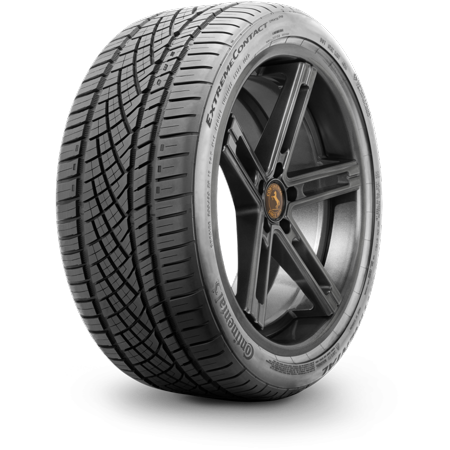 Backed by a 70,000-mile tread life warranty, this tire is built to last, even in light snow and winter weather. Customers report excellent handling on both dry and wet roads, largely due to the model’s Evertread
TM compound and asymmetrical tread design.
Backed by a 70,000-mile tread life warranty, this tire is built to last, even in light snow and winter weather. Customers report excellent handling on both dry and wet roads, largely due to the model’s Evertread
TM compound and asymmetrical tread design.
Like many Michelin tires, the Defender LTX is a costly option. However, its price point reflects the quality of materials, long tread life, and advanced technology put into the model. Compare prices for the Michelin Defender LTX on Tire Rack and Discount Tire.
Another reputable and industry-backed model made by Michelin, the Pilot Sport A/S 3+ All-Season tire is made for sporty vehicles. Though it’s a higher-profile model than the Defender series, the Pilot Sport boasts excellent handling and cornering abilities. The tire is made from Michelin’s Variable Contact Patch 3.0 technology, which ensures an even wear as you drive.
However, the Michelin Pilot Sport A/S 3+ All-Season only has a 45,000-mile tread life warranty, which is lower than most of our other picks for best all-season tires. It also has some reported issues with snow and ice performance. However, if you’re looking for an all-season tire that’s been manufactured with the spirit of racing in mind, consider this model. Compare prices for the Michelin Pilot Sport A/S 3+ All-Season tire on Tire Rack and Discount Tire.
It also has some reported issues with snow and ice performance. However, if you’re looking for an all-season tire that’s been manufactured with the spirit of racing in mind, consider this model. Compare prices for the Michelin Pilot Sport A/S 3+ All-Season tire on Tire Rack and Discount Tire.
Also mentioned in our best cheap tires review, the Hankook Kinergy PT is an affordable, no-fuss option for drivers. The standard touring all-season tire offers a comfortable, low-noise drive and a 90,000-mile tread life warranty, one of the longest in the industry.
While this is not the best all-season tire for light trucks – its maximum load capacity is 2,271 pounds – it is suitable for passenger cars, minivans, family sedans, and crossovers. Compare prices for the Hankook Kinergy PT on Tire Rack and Discount Tire.
An all-season tire with better snow and ice durability than most, the Goodyear Assurance WeatherReady tire is equipped with a 60,000-mile tread life warranty and an asymmetric tread for maximum grip.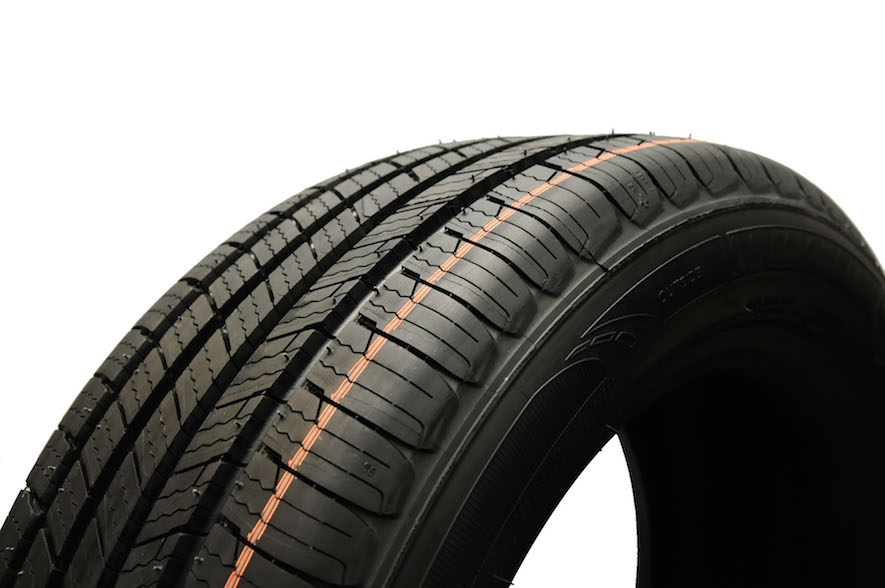 The model features zig-zag biting edges to combat snow and ice, earning it the three-peak mountain snowflake (3PMSF) symbol.
The model features zig-zag biting edges to combat snow and ice, earning it the three-peak mountain snowflake (3PMSF) symbol.
This grand touring all-season tire earns an impressive “A” traction rating according to Uniform Tire Quality Grading Systems (UTQGS) scoring, and it is sized for most passenger cars, SUVs, and minivans. Compare prices for the Goodyear Assurance WeatherReady tire on Tire Rack and Discount Tire.
An ultra-high performance all-season tire, the Goodyear Eagle F1 Asymmetric All-Season features an asymmetric tread and racing-inspired handling. This model is a great choice for drivers looking for a step above a standard all-season tire, though it is not the longest-lasting option on the market. It only has a 45,000-mile tread life warranty.
The tire boasts excellent dry and wet handling, but only decent snow and ice abilities. However, customers positively note the tire’s steering responsiveness and low noise. Compare prices for the Goodyear Eagle F1 Asymmetric All-Season tire on Tire Rack and Discount Tire.
Compare prices for the Goodyear Eagle F1 Asymmetric All-Season tire on Tire Rack and Discount Tire.
All-season tires are suitable for most weather conditions: dry, wet, and some ice and snow. While all-season models can be used during colder months, they are not a replacement for a traditional winter tire. All-season tires don’t have the same capabilities and design features as winter tires, which are specially crafted to remain flexible in freezing temperatures.
If you don’t live in an area where the weather regularly drops below 45 degrees, all-season models are fine to use in the winter. These models generally sport a symmetrical tread, but a few popular models, like the Michelin Defender LTX, have an asymmetrical pattern. Symmetrical tread wears more evenly, meaning fewer bald patches and longer use, while asymmetrical tread uses multiple block designs to offer better traction.
All-season tires are best suited for everyday commutes and daily drivers. They are a great option for a reliable drive without many bells and whistles.
They are a great option for a reliable drive without many bells and whistles.
What’s the difference between all-season and all-weather tires? In a nutshell, all-weather tires are built to handle winter conditions and even deep snow, while all-season tires are not. All-season tires have light snow traction, but they won’t handle serious winter driving. Keep in mind that neither tire is designed to handle off-road driving.
All-season tires are usually less expensive than specialty models, like winter tires. They typically cost anywhere from $50 to about $200. However, the cost of all-season tires will climb as the model’s performance ability increases.
Here’s what the best all-season tires cost on Tire Rack:
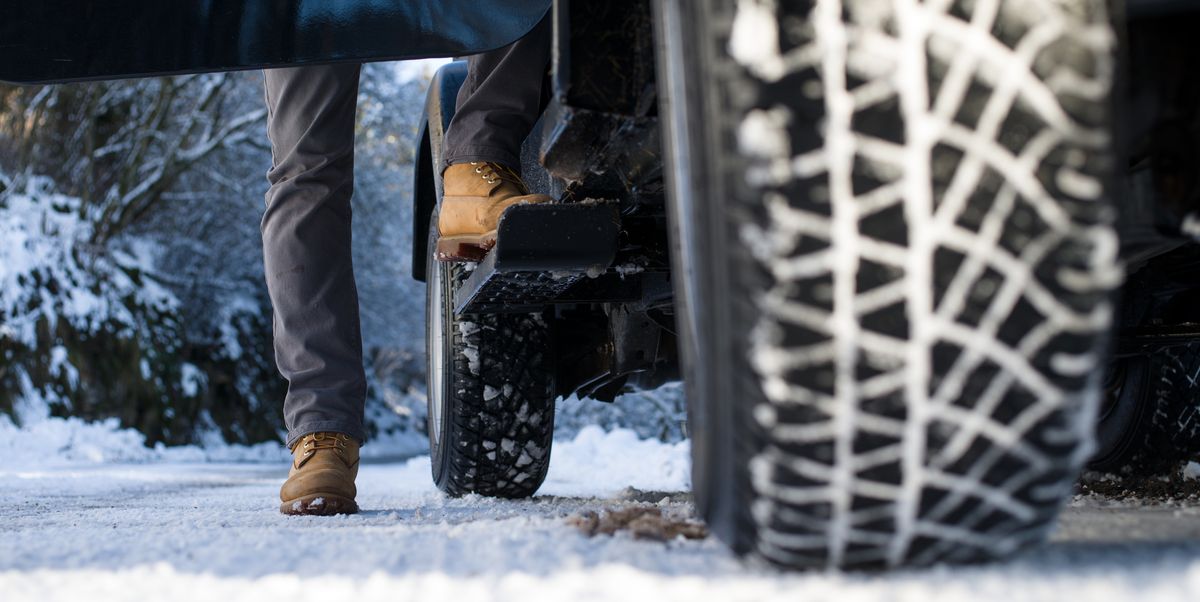 98 (225/60R17)
98 (225/60R17)Tires heavily impact your driving experience and are a more important investment than many drivers realize. Before purchasing cheap tires and hoping for the best, consider how you’d like your car to drive. Performance tires, all-terrain tires, touring tires – each provides a specific drive and feel for your vehicle. It’s best to consider a few different tire models before committing to a purchase. We recommend checking out Michelin and Cooper.
One of the biggest players in the tire industry, Michelin is highly regarded by customers and industry leaders alike. We like the brand because of its high quality and tire variety. While some competitors may make one type of tire particularly well, Michelin produces top-tier tires across the board.
Read more about this brand in our Michelin tires review, or start comparing Michelin prices on Tire Rack and Discount Tire.
Often, drivers looking for all-season tires are also looking for an affordable option. Cooper offers cheaper alternatives to big-name manufacturers like Michelin and Goodyear – without compromising quality. The company specializes in replacement tires and offers tread life warranties up to an impressive 80,000 miles.
You can learn more in our Cooper tires review, or compare Cooper tires right away on Tire Rack or Discount Tire.
After comparing many different models, we ranked the Michelin Defender LTX as the best all-season tire overall. It can handle wet conditions, and it provides a comfortable ride with good handling.
Michelin offers some great tires that can handle many different road conditions in its Defender and Pilot Sport lines.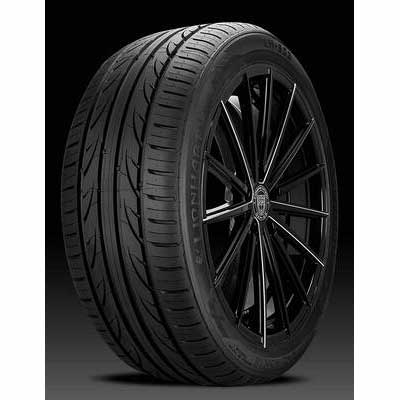 We also featured tires by Hankook and Goodyear in our top picks. However, as you shop for new tires, you may find other options that suit your needs from brands like Bridgestone, Firestone, Pirelli, Yokohama, or BFGoodrich.
We also featured tires by Hankook and Goodyear in our top picks. However, as you shop for new tires, you may find other options that suit your needs from brands like Bridgestone, Firestone, Pirelli, Yokohama, or BFGoodrich.
If your all-weather tires are more along the lines of snow tires, you might find that the softer rubber wears out quicker in the summer. That’s when it can be a good idea to switch to summer tires.
Whether you want all-season or all-weather tires depends on the climate and road conditions. If you just need to gain control on wet surfaces and in the occasional snow flurry, all-season tires work well. But, all-weather tires use a type of tread compound that can handle more snow and freezing temperatures.
All tires are purpose-built. Walk along the aisles of your local Les Schwab and you’ll see just how different they are, from the tread design to the sidewall. Even the type of tread compound makes a big difference. Before you face the coming winter in a set of all-season tires, it’s important to understand the difference between all-season and winter tires, and what kind you need to safely navigate the rain, snow, ice, and freezing temperatures.
Even the type of tread compound makes a big difference. Before you face the coming winter in a set of all-season tires, it’s important to understand the difference between all-season and winter tires, and what kind you need to safely navigate the rain, snow, ice, and freezing temperatures.
All-season tires are designed for a smooth, quiet ride in most conditions. Many all-season tires do great in the rain and bare pavement year-round. While a set of all-season tires can offer some traction in light snow and the occasional winter storm, they’re not designed for deep snow, ice, and cold weather (when temperatures stay below ~45º F).
Winter or snow tires are designed for prolonged winter conditions, including snow, ice, and slush. The tread compounds in those tires stay softer and more flexible in cold weather. This improves traction, handling, and control when temperatures dip below ~45º F. Additionally, the biting edges of the deep, wide, and jagged tread on snow tires maintain traction in the harshest conditions. A winter tire that includes studs can add even more traction when driving on icy roads.
This improves traction, handling, and control when temperatures dip below ~45º F. Additionally, the biting edges of the deep, wide, and jagged tread on snow tires maintain traction in the harshest conditions. A winter tire that includes studs can add even more traction when driving on icy roads.
| WINTER/SNOW TIRES | ALL-SEASON TIRES | |
|---|---|---|
| ROAD CONDITIONS | Snow, ice, rain, and slush ~45ºF and below. | Rain, dry, some light snow ~45ºF and up. |
| TREAD | Deep, wide, jagged tread offers better traction in winter road conditions. |
Shallower grooves offer comfort and control in most road conditions. |
| RUBBER COMPOUND | Rubber compound stays soft and flexible in cold weather to help with grip. | Rubber compound performs best above ~45ºF, and is designed for longer tread life. |
| SIPING | Winter tires will typically have more siping to maximize grip in winter-driving conditions. | Siping in all-season tires dissipates heat and offers some added traction in wet conditions. |
When you’re on bare or wet pavement, the right set of all-season tires are designed to keep you safely on the road. They even do okay in mild winter conditions.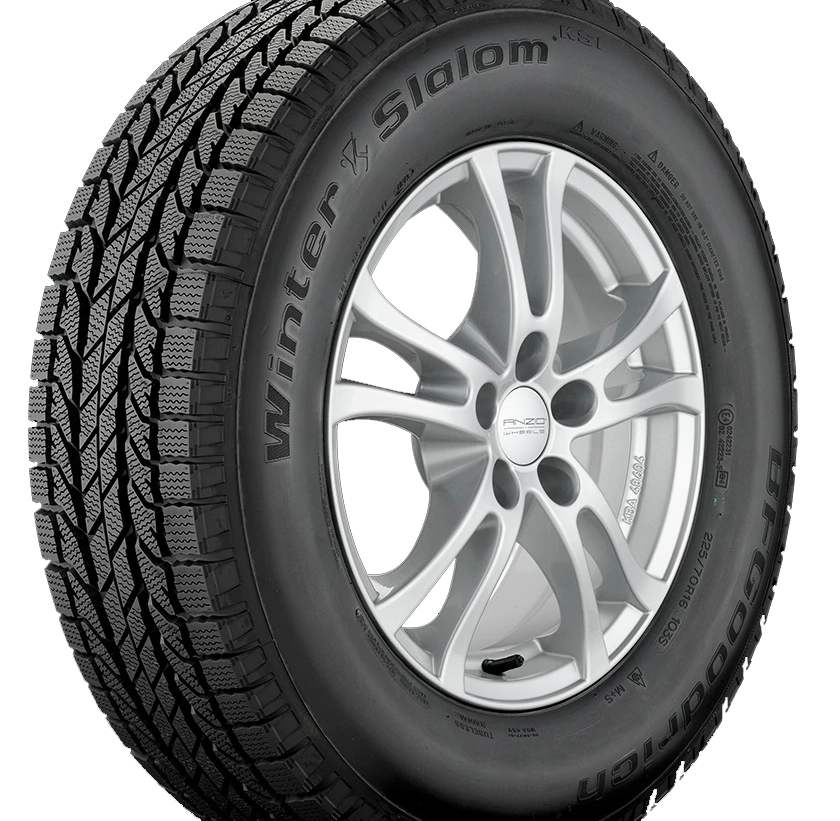 But when the weather worsens and roads are covered in ice and snow, having the right set of winter or snow tires can help you stay in control of your vehicle. That includes stopping. Think about it this way, when going on a long hike, a pair of hiking shoes will help you traverse almost any terrain. Even some snow. But when you get to packed snow and ice, snowshoes are the only way to go. They’re designed for winter conditions.
But when the weather worsens and roads are covered in ice and snow, having the right set of winter or snow tires can help you stay in control of your vehicle. That includes stopping. Think about it this way, when going on a long hike, a pair of hiking shoes will help you traverse almost any terrain. Even some snow. But when you get to packed snow and ice, snowshoes are the only way to go. They’re designed for winter conditions.
The answer depends on what kind of winter driving you do. Installing a set of snow tires on your vehicle from November to March can be a good idea. Especially if you’re going to the mountains every weekend or your town gets hit hard by winter weather and stays at or near freezing for months at a time.
Additionally, doing seasonal changeovers between snow and all-season tires will help extend the life of your snow tires.
Les Schwab Tip: A set of chains that fit your vehicle can help keep you safely on the road when your all-season tires lose traction.
As winter approaches, your local Les Schwab can help you decide if a set of winter/snow tires is right for you, and whether you need studs. Plus, we can help fit your vehicle for a set of snow chains for your next trip into the deep stuff.
Schedule an Appointment
All season tires
Car tires
Sort by: by popularityalphabeticalby ratingby price
Sort by: by popularity alphabetically by rating at the price of
Until recently, all-weather tires for Europe did not exist in principle, and even now on the branded websites of the most famous tire manufacturers, as a rule, there is no such category and there are only categories of winter, summer and off-road tires. At the same time, in the United States, almost all SUVs drive on conditionally called all-season tires. But about 5 years ago, many manufacturers thought about the production of all-season tires for the European market, and most importantly: for cars. Perhaps the impetus for this was weather anomalies in the same States and Great Britain, or maybe the market dictated its trends.
At the same time, in the United States, almost all SUVs drive on conditionally called all-season tires. But about 5 years ago, many manufacturers thought about the production of all-season tires for the European market, and most importantly: for cars. Perhaps the impetus for this was weather anomalies in the same States and Great Britain, or maybe the market dictated its trends.
So what is all-season tires? As a rule, this is not necessarily a tire with an aggressive tread, but a mandatory all-season attribute is the presence of sipes on each tread block. The lamellas are used to create additional "cutting" surfaces for ice and packed snow. Each additional edge, clinging to a slippery surface, contributes to the process of acceleration or braking, that is, the adhesion of the car to the road.
Fig. 1. Almost summer Michelin CrossClimate (but with a mountain peak icon and a snowflake in it on the sidewall), Hankook Optimo 4S H730 (which greatly surprised all tire manufacturers, why do we need a winter tire in spring?), and supposedly a winter alpine Michelin Alpin A5 with a pattern hardly distinguishable from his almost all-weather brother.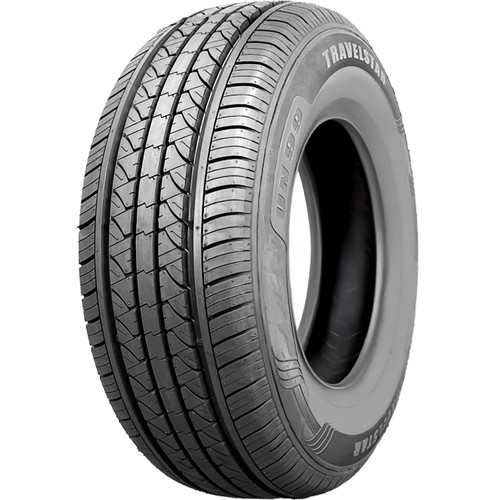
Why not make sipes on all tires - both winter and summer? Yes, because they are harmful and reduce the contact patch on the pavement in summer. Indeed, slicks are generally ideal for braking on dry pavement - tires without any tread pattern, solid, without moisture-removing grooves, slots and lamellae. But for wet asphalt, channels are already required to drain water from the contact patch, otherwise the car will float above the road - the effect of aquaplaning.
We know about winter and summer tires that they use a soft and hard rubber compound, respectively, for optimal performance in their temperature range. So for all-season tires should be used rubber of medium hardness.
All-weather tires enjoy mixed success with car owners. As a rule, the demand for them is the highest during periods of economic crises and the lowest when everything is fine and there is no shortage of funds. All-season tires are presented at Best-tyres. ru all year round and you can buy them in Moscow, Rostov-on-Don and Krasnodar, but the maximum range and availability falls on spring and autumn. Why is it so, you ask? You will find the answer to this question below.
ru all year round and you can buy them in Moscow, Rostov-on-Don and Krasnodar, but the maximum range and availability falls on spring and autumn. Why is it so, you ask? You will find the answer to this question below.
Each manufacturer has two tire shipment seasons and two payment terms for them - spring (summer) and autumn (winter), and no one ships all-season tires separately to dealers and distributors. Therefore, some all-season tires are sold together with summer tires and have a higher rubber stiffness and higher speed indexes, while the other part is sold together with winter tires and is more designed for operation in winter. Since the entire huge volume of tires from the winter program of the year is to be paid for, then, accordingly, their choice falls in warehouses every day, since none of the sellers wants to stay with these tires until next autumn. And vice versa, everyone is trying to get rid of summer tires before the start of summer, since the manufacturer must receive all his money in full before the start of summer.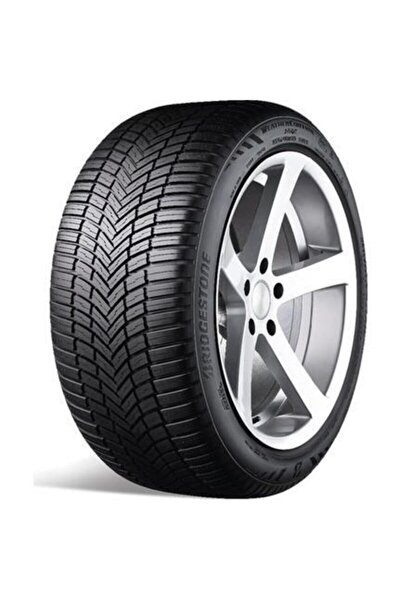 Yes, and the supply of winter tires to warehouses begins at the end of spring, and summer tires should make room for winter ones.
Yes, and the supply of winter tires to warehouses begins at the end of spring, and summer tires should make room for winter ones.
All-season tires from the winter program can be called any winter tires for the European winter. Some of them even say All Weather (any weather according to Goodyear) or All Season (any season according to Nokian or Pirelli). Looking at this Michelin Michelin Alpin A5 tire, you don’t immediately recognize it as a winter tire. There are not many sipes at all and they are noticeable only upon closer inspection, and the pattern is like a good rain tire.
Fig. 2 - winter tires of the European type, allowing speeds up to 240 km / h in some sizes and summer operation (Nokian WR A4, Goodyear Ultra Grip Ice SUV G1, Continental ContiWinterContact TS860 ).
In the winter program, absolutely every leading manufacturer has not only studded tires, but also the so-called Velcro (Nordic, or Scandinavian-type tires, speed index 160-190 km / h) and European-type tires (high-speed tires for mild winters, speed indices from 190 to 270 km/h).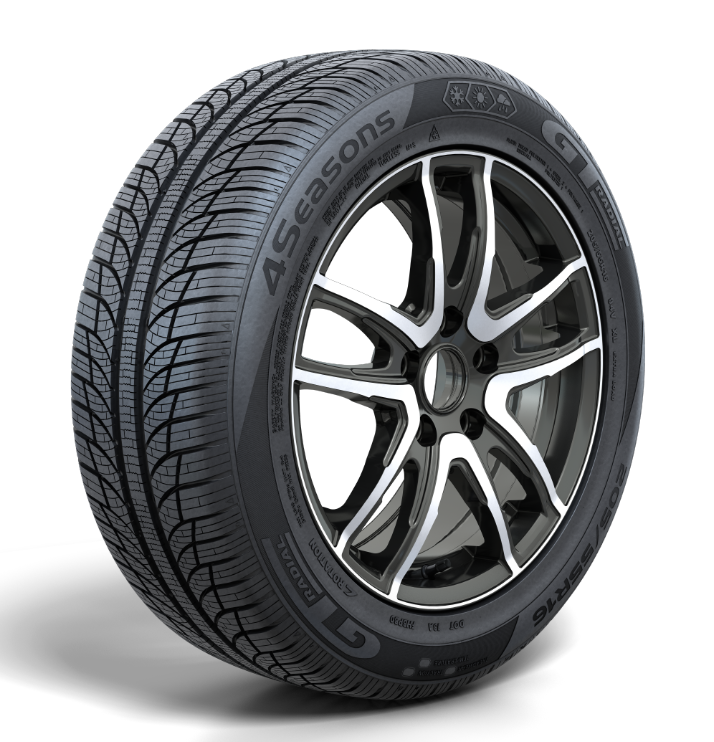 Only Bridgestone does not supply European-type tires to us for some reason of its own, and does not supply Velcro to central Europe. Any other manufacturer sells them in Russia and these tires can be used as all season tires. It is probably more correct to do this in Yakutia or Murmansk, but people and especially rental companies do this in Europe, and in Moscow and other cities.
Only Bridgestone does not supply European-type tires to us for some reason of its own, and does not supply Velcro to central Europe. Any other manufacturer sells them in Russia and these tires can be used as all season tires. It is probably more correct to do this in Yakutia or Murmansk, but people and especially rental companies do this in Europe, and in Moscow and other cities.
In the summer program of many manufacturers there are tires of all-season type or so-called tires with possible driving on snow. For example, Pirelli is increasingly persistent in offering Pirelli Scorpion Verde All-Season tires on the Russian market, which are increasingly found even in factory equipment on elite Range Rover or Mercedes SUVs. Hankook, as if frightened, released a similar tire in an extremely limited range of sizes (see Fig. 1.) Or, for example, Michelin with its Michelin CrossClimate + tire positions it not as an all-season tire (see Fig.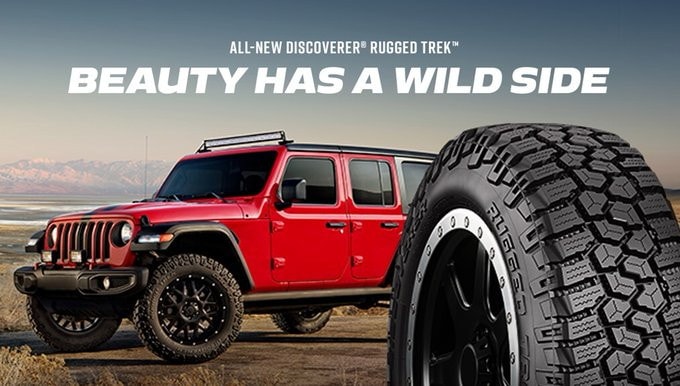 1), but as a rubber on which you can calmly and will confidently reach the tire shop in case of a sudden snowfall in order to change the tires to summer ones, and not a tire for year-round use.
1), but as a rubber on which you can calmly and will confidently reach the tire shop in case of a sudden snowfall in order to change the tires to summer ones, and not a tire for year-round use.
Other manufacturers of all-seasons from the summer program do not have such comments, because it's hard to give anti-advertising to your own product.
Fig. 3 - all-season tires Continental ContiCrossContact LX Sport, Pirelli Scorpion Verde All-Season, Michelin Latitude Cross from the manufacturer's summer program.
All-season tires are often confused by SUV owners with off-road or so-called mud tires. In fact, this point of view is a deep delusion and the inscription M + S, meaning mud + snow, means only loose snow, and not rolled snow in any way, and even more so, there was no inscription about ice anywhere. The aggressive toothy tread pattern of such tires does not have a large number of sharp edges (sipes) that can cling to ice, and the rubber compound is too hard, as it must be able to withstand cuts from sharp stones in the desert on trophy raids.
Traveling on such tires in winter is possible only for the time being, until some pillar decides to cross the road. Tires of the category HT (High Terrain - high ground) or AT (All Terrain - any ground) can still somehow be positioned as all-season tires, such as BF Goodrich AT KO2, Yokohama AT15 or Hankook ATM RF10, beloved by all jeepers (Fig. 4), but more "toothy" MT (Mud Terrain - mud ground) have no chance at all for safe braking on smooth ice with their huge tread blocks (Fig. 5), because their element is extreme mud and slush, for which they have tread pattern even on the sidewall.
Fig. 4 - BFGoodrich All Terrain T/A KO2, Hankook Dynapro ATM RF10, Yokohama AT15 mistaken for all-weather tires by jeep drivers are actually designed for careful driving on the highway and climbing through serious mud the last couple of kilometers to your country house or cottage. On loose snow, they can give good performance due to the aggressive tread pattern, but they are completely powerless on packed snow or icy surfaces.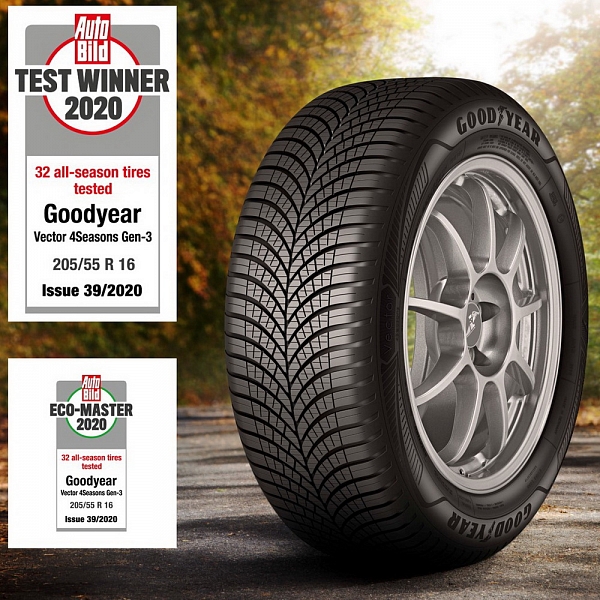
Fig. 5 - Mud Terrain off-road tires not intended for winter use at all (BFGoodrich Mud Terrain T/A KM2, Mickey Thompson Baja ATZ P3, Marshal Road Venture MT KL71). These tires do not have sipes at all and the number of sharp edges is not high, so they are categorically not suitable for winter operation even if the craftsmen-kulibins stick a bunch of spikes into their tread.
We do not advise most car owners to buy all-season tires. Just like in a clothing store, they will not advise you to wear the same sneakers all year round. Moreover, in recent years, even sneakers have appeared in winter and demi-season versions. If you have at least a dozen pairs of shoes and understand the difference when to use slippers, when shoes or moccasins, when to take summer shoes with thin hard soles, and when it’s fur boots with thick porous soles, and when to wear boots, it becomes incomprehensible why the car should always be on the same tires. And now we are not talking about show-offs or appropriateness, that they say it’s not correct to come to the ball with boots, but to go fishing in model shoes. It is only about your safety and maximum tire grip. After all, it doesn’t occur to you to play basketball in summer boots in the gym - you understand that you will slip.
And now we are not talking about show-offs or appropriateness, that they say it’s not correct to come to the ball with boots, but to go fishing in model shoes. It is only about your safety and maximum tire grip. After all, it doesn’t occur to you to play basketball in summer boots in the gym - you understand that you will slip.
Of course, in my opinion, we are not talking about the use of all-seasons at all in rural areas, where a large amount of snow falls, and snowplows are more familiar thanks to TV, and not real life. But for southern cities like Sochi, Krasnodar or Rostov-on-Don, you need to understand that an all-weather tire:
1) will wear out faster than summer in case of hot summer;
2) will show more mediocre performance in hot weather - braking distance in hot weather can increase by 10-20%;
3) on snow-covered surfaces or with icy conditions on the plain, all-season must be driven very carefully.
4) and on hills and serpentines, riding on all-season tires can be simply dangerous and extremely unprofitable, since body repairs will cost much more than the notorious savings on tires.
5) it is possible to recommend using all-season tires to those drivers who can refuse to drive a car at any time when they see snow outside the window or hear about ice on the roads. Although I personally can't do that either. After all, snowfall can catch on the road, and ice can appear locally on just one windswept overpass.
On our roads, it is recommended to do wheel balancing at least twice a year or every 5000 km, which means you won’t be able to save on tire fitting. Unbalanced tires, on the other hand, do not last long at all, the car consumes more fuel on them and is subject to the destruction of bearings and chassis levers, when each of their wheels behaves like a swan, cancer and pike.
Moreover, you need to understand that such tires will most likely wear out in a couple of years, while two sets - winter and summer - could last 4 years or even more, depending on the mileage and operating conditions.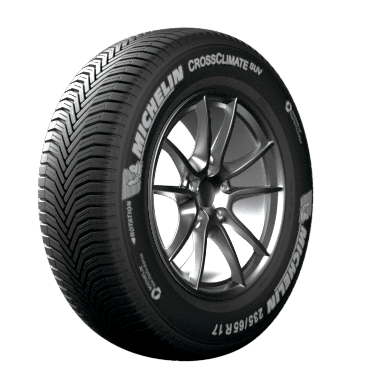
Fig. 6. "And I'm on the all-season!" According to the 2004 "Behind the Wheel" magazine, 75% of Canadians are convinced that all-season tires are completely safe, while winter tires are made for someone else. And that's what it sometimes leads to. This time we were lucky, and in the collision 96 cars and all of them got off with light bruises, because they drove slowly and fastened, realizing that there was ice under the wheels.
It must be understood that any universal product is inferior to a professional product that is designed specifically for given weather conditions. Of course, in the summer, in the heat, summer tires will provide much better performance than all-season tires. So in winter, in frost on a snowy or icy road, even a European-type winter tire can not weakly fray the driver’s nerves, and of course a real winter Velcro or studded tire will give a much better result than its weak all-weather relative.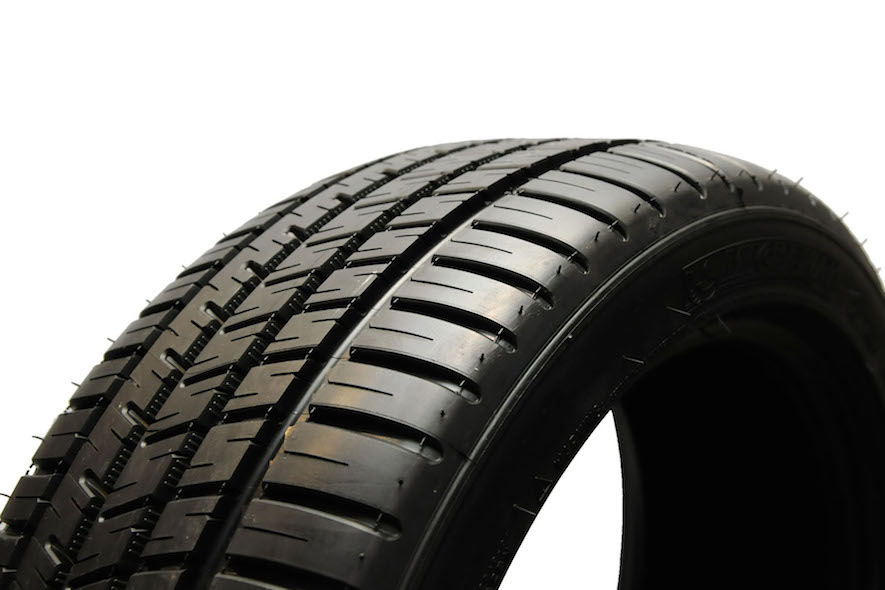
Gen. director Zhdanov I.G.
Fig. 7 - not so lucky case in Canada in the same 2014 - three dead.
Conclusion: thank God that our people for the most part love themselves, buy winter tires and we have not even heard about more than 20 colliding cars in Russia, while dozens of accidents with more than 50 cars, although in these countries it is not customary to drive as fast as in Europe, even in the summer. It is hard for us to understand why papier-mâché houses are built in the land of hurricanes, and in the land of snowfalls they like to ride all-season.
Tires, as many believe, are divided into all-season, summer and winter. This misconception arose due to the fact that some manufacturers indicate All Season or All Weather in the tire label, which means an all-season or all-weather tire. Is this division correct, why do they put the inscription "all-weather" or "all-weather" on the tires, and is it worth using all-weather seasons in Russia?
Car tires with the inscription All Season, All Weather or with the sun / snowflake icon are not produced for year-round use in Russia.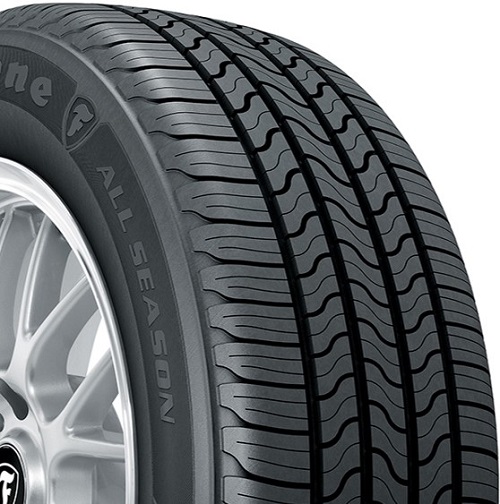 Such a tire, which is considered an all-weather tire, is intended for operation only in countries with mild climatic conditions. You can ride an all-season only when the air temperature is up to 0 degrees Celsius. If all-weather tires were ideal for all-weather use, then, you see, tire manufacturers would refuse to make expensive summer tires and winter tires. Why spend money on numerous developments and tests of seasonal models, if the all-season would be able to once and for all save car owners from seasonal changing shoes.
Such a tire, which is considered an all-weather tire, is intended for operation only in countries with mild climatic conditions. You can ride an all-season only when the air temperature is up to 0 degrees Celsius. If all-weather tires were ideal for all-weather use, then, you see, tire manufacturers would refuse to make expensive summer tires and winter tires. Why spend money on numerous developments and tests of seasonal models, if the all-season would be able to once and for all save car owners from seasonal changing shoes.
The first all-season tire appeared in 1977 in the USA. But then the all-weather "Tiempo" was loudly ridiculed. Three years later, in Germany, the same fate befell the all-weather All Weather from Goodyear. In 1989, Dunlop presented an improved All Season tire. The new development has taken root in countries with a mild climate. Since then, many companies have also started producing all-season tires labeled All Season or All Weather.
But it should be noted that all-season tires are not suitable for year-round use in harsh winter conditions. For Russia, all seasons are not particularly suitable. At a temperature of minus 7 degrees, rubber - all-weather loses elasticity, which leads to a decrease in grip and traction. Winter tires are made from a special material that retains elasticity in cold weather and provides better traction. Winter tires, as tests show, grip on snowy roads is 50-60% higher than that of all-weather tires. Is it worth risking your safety and buying all-season tires.
For Russia, all seasons are not particularly suitable. At a temperature of minus 7 degrees, rubber - all-weather loses elasticity, which leads to a decrease in grip and traction. Winter tires are made from a special material that retains elasticity in cold weather and provides better traction. Winter tires, as tests show, grip on snowy roads is 50-60% higher than that of all-weather tires. Is it worth risking your safety and buying all-season tires.
All season tires are an attempt to combine the best characteristics of winter and summer tires in one tire. Therefore, the All Seasons or All Weather rubber tread should contain the advantages of all seasonal tires. Most all seasons have rounded sidewalls, borrowed from summer models. From winter tires, the all-season tire got wide grooves and dissected sipes.
Winter tires have a high self-cleaning tread that is adapted to crush snow. And it consists of lamellar blocks. Summer tires have a lower tread.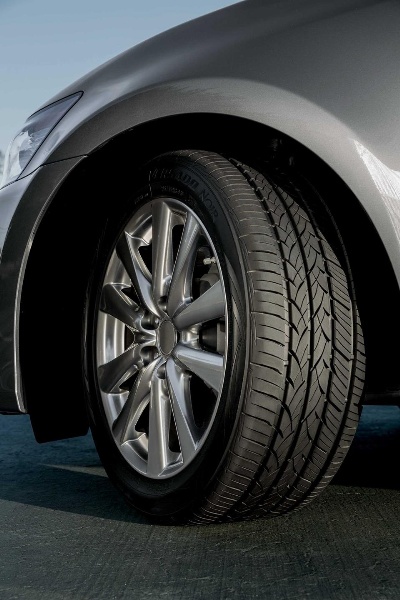 The main thing for them is reliable grip with asphalt, so the width and depth of the grooves are small. Can two completely different treads fit perfectly in one all-season tire? At the same time, in the cold it will crush the snow, and in the summer heat it will provide reliable traction. Of course not. After all, the composition of rubber for the summer is fundamentally different from the rubber compound for the winter. An all-season tire simply cannot perform perfectly in 30-degree heat or 25-degree frost.
The main thing for them is reliable grip with asphalt, so the width and depth of the grooves are small. Can two completely different treads fit perfectly in one all-season tire? At the same time, in the cold it will crush the snow, and in the summer heat it will provide reliable traction. Of course not. After all, the composition of rubber for the summer is fundamentally different from the rubber compound for the winter. An all-season tire simply cannot perform perfectly in 30-degree heat or 25-degree frost.
The advantage of all-season tires over winter tires is their relatively low price. The savings on buying year-round all-season tires compared to buying two sets of seasonal shoes (summer and winter tires) is significant.
But do not flatter yourself when you see inexpensive all-season tires for sale with the All Season or All Weather marking, and even more so, count on the fact that the tire will serve perfectly in all seasons.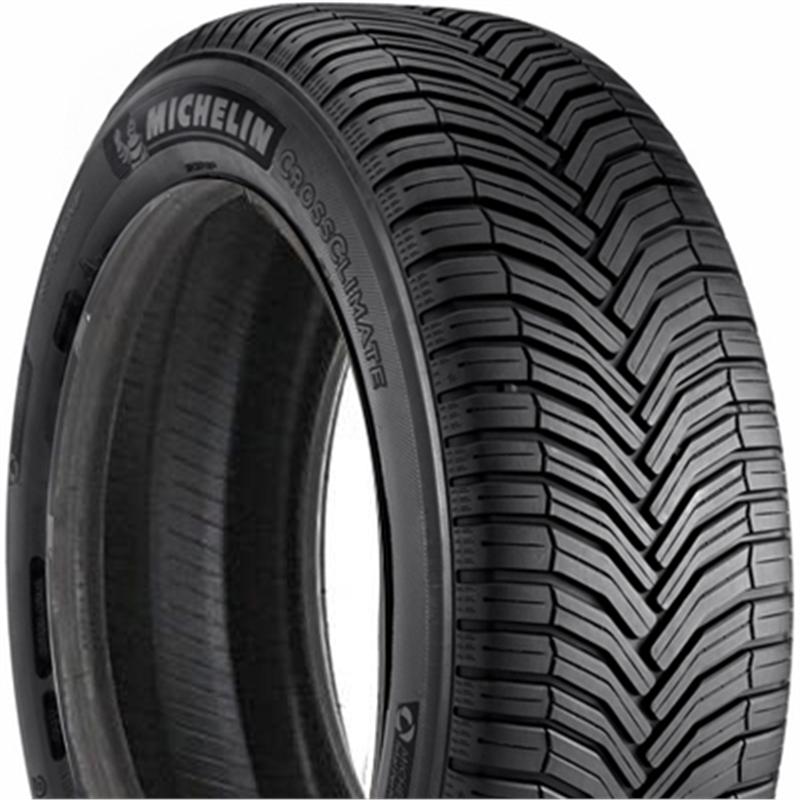 All-weather season, we repeat, is not designed for use in our country. Driving in the same tires in winter and summer will only cause additional trouble and threaten your safety.
All-weather season, we repeat, is not designed for use in our country. Driving in the same tires in winter and summer will only cause additional trouble and threaten your safety.
However, the reason for the popularity of the all-season, to a greater extent, lies not in the desire of motorists to save money on buying a tire. The fact is that some major automakers produce cars that are factory-equipped with all-season tires labeled All Seasons or All Weather. This is due to the fact that the automaker cannot predict at what time of the year the car will find its owner. Therefore, some imported cars leave the assembly line "shod" in all-season tires.
The second reason for the popularity of all-season tires is the love of Russians for passenger SUVs. Tires for SUVs are selected in terms of versatility so that a 4x4 car can master any off-road, mud and snow. Therefore, seasonality fades into the background. And in such a situation, preference is given to tires marked "M + S" (mud + snow).
Many SUV owners believe that M+S all-season tires are ideal for year-round use. They are confident that the all-wheel drive SUV will cope with the icy, snowy road on its own, and in the cold, the all-weather will show excellent performance. Meanwhile, the safety and handling of a car largely depends on what tires it is "shod" in. And all-season tires clearly lose before real winter tires. Many tests are carried out every year to compare the performance of M+S all-season tyres, winter Velcro and studded tyres. The all-season M+S performance on ice is 34-60% worse than Velcro. And the difference in the snow is 31-82%. Studded tires perform 37-85% better on snow and 9% better on ice0% than off-road all seasons. Compared to all-season tires, winter tires show better handling and smoothness on any road, as well as excellent flotation in deep snow. In terms of braking properties, winter tires are also superior to all-season tires.
Winter tires must be skid resistant and exhibit excellent braking properties.